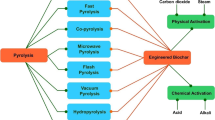Abstract
This study focused on using scale inhibitors for calcium sulfate that are not only highly effective, but also comply with present restrictive environmental control legislations. In this respect, some biodegradable compounds-based biopolymers, such as carboxymethyl starch (CMS), carboxymethyl cellulose (CMC), and chitosan (Ch), were evaluated at temperatures 90–95 and 130°C. The results obtained were compared with the performance of polyaspartic acid (PAA), which is well known in this application, as well as other chelating synthetic polymers (polyacrylamide and amphoteric polyacrylamide). The role of the degree of substitution (DS) of carboxymethylated biopolymer and the charge density of polyacrylamide (AmPAM-30 and AmPAM-50) on inhibition performance of scale were also examined. The synergistic effect of PAA with investigated inhibitors was studied for economic and environmental purposes. The results revealed that both the degree of substitution of carboxymethylated biopolymers and charge density of polyacrylamide have a profound effect on improving the performance of the investigated scale inhibitors. The efficiency values were correlated to the thermal degradation behavior (TGA) of biopolymers. PAA had the highest synergistic effect of all investigated inhibitors, where the inhibition efficiency was found to range from 98% to 100%, at a temperature of 130°C, with low doses of both PAA (2 ppm) together with biopolymers. This efficiency is observed using 20–40 ppm of PAA. The synergistic effect of PAA (2 ppm) also showed enhancement of the performance of low doses of polyacrylamides (5 ppm) in maintaining soluble Ca2+ in solutions, increasing the efficiency from ∼57% to ∼100%, as well as its ecotoxicological property.







Similar content being viewed by others
References
Basta AH (1998) Preparation, characterization and properties of paper sheets made from chemically modified wood pulp treated with metal salts. Int J Polym Mat 42:1
Bayer AG (2001) ZF-Zentrate Analytik. File No: NA/932, National Industrial Chemicals Notifications and Assessment Schem (Full public report Submitted by Bayer)
Coat AW, Redfern JP (1964) Kinetic parameters from thermogravimetric data. Nature 201:68
Conner AZ, Eyler RW (1950) Analysis of sodium carboxymethyl cellulose. Anal Chem 22:1129
Comstock D (1991) Industrial water treatment, 39
Deming SN, Morgan SI (1987) Experimental design. Elsevier, Achemometric New York
Dixon WJ, Massey FJ Jr (1983) Introduction to statistical analysis, 4th edn. McGraw-Hill, International Book Company, Japan
Fekdman D, Lacasse L, Beznaczuk LM (1986) Lignin polymer systems and some progress in polymer science application. Prog Polym Sci 12:271
Frohner KR, Panahandeh H (1975) An advanced seeding process in salin water conversion. Desalination 16:261
Gill JS (1999) A novel inhibitor for scale control in water desalination. Desalination 124:43
Gill JS, Schell CJ, Sherwood NS (1995) Controlling silica/silicate deposition using polyether polyamino methelene phosphonates. US Patent #5 378:368
Heinz Th, Pfeiffer K, Lazik W (2001) Starch derivatives with high degree of functionalization Pt III. J Appl Polym Sci 81:2036
Hitoshi S, Aiba S (2004) Chemically modified chitin and chitosan as biomaterial. Prog Polym Sci 29:887
Khalil MI, Farag S, Abdel Fattah S (1998) Utilization of some starch derivatives in heavy metal ions removal. Appl Polym Sci 69:45
Marton G (2001) Production and application of environment-friendly starch derivatives for the protection of the environment. Nat Res Develop Prog, Hungary
Meister JJ, Yin L (1993) Studies of lignin mechanisms. Polymer Prepr 34(2):656
Moriarty BE, Rasimas JP, Young PR, Hoots JE (2001) Methods to monitor and control scale in cooling water systems. Presented at corrosion 2001, Houston, Texas, March 11–16
Ouyang X, Qiu X, Hongming , Hongming L, Yang D (2002) Studies on the properties of the sodium lignosulfonate in cooling water circulation system. presented in 2nd ISETPP Conf., Guangzhou, China, p 803
Silveman DC, Kalota DJ, Stover FS (1995) Aquatic toxicity, OSAR, corrosion inhibitors, non-toxic presented at corrosion 1995, Houston, Texas
Strauss SD (1997) Special report: water treatment. Power 141(4):27–45
Weaver MO, Bagley EB, Fanta GF, Doane WM (1974) Methods of forming superabsorbent products for use in agriculture. J Appl Polym Sci Appl Polym Symp Ed 15:97
Williams DC, Rycoroft CP (1994) Chemical agents and method for the inhibition of corrosion and deposit formation in water system. US Patent 5:630–985
Author information
Authors and Affiliations
Corresponding author
Rights and permissions
About this article
Cite this article
Saleah, A.O., Basta, A.H. Evaluation of some organic-based biopolymers as green inhibitors for calcium sulfate scales. Environmentalist 28, 421–428 (2008). https://doi.org/10.1007/s10669-008-9163-7
Received:
Accepted:
Published:
Issue Date:
DOI: https://doi.org/10.1007/s10669-008-9163-7




